Are you aiming to enhance your forex trading portfolio with a reliable and highly traded currency pair? GBPUSD in forex offers just that—a blend of high liquidity and volatility that can lead to significant trading opportunities. Whether you’re a novice trader or have years of experience, understanding the GBP/USD currency pair is essential for making informed trading decisions. This guide will walk you through everything you need to know about GBPUSD in forex trading, from its fundamentals and influencing factors to effective trading strategies and risk management techniques. Additionally, partnering with a regulated forex broker like Opofinance ensures you have the secure and efficient platform needed to succeed. Let’s dive into the intricacies of GBPUSD and empower your trading journey.
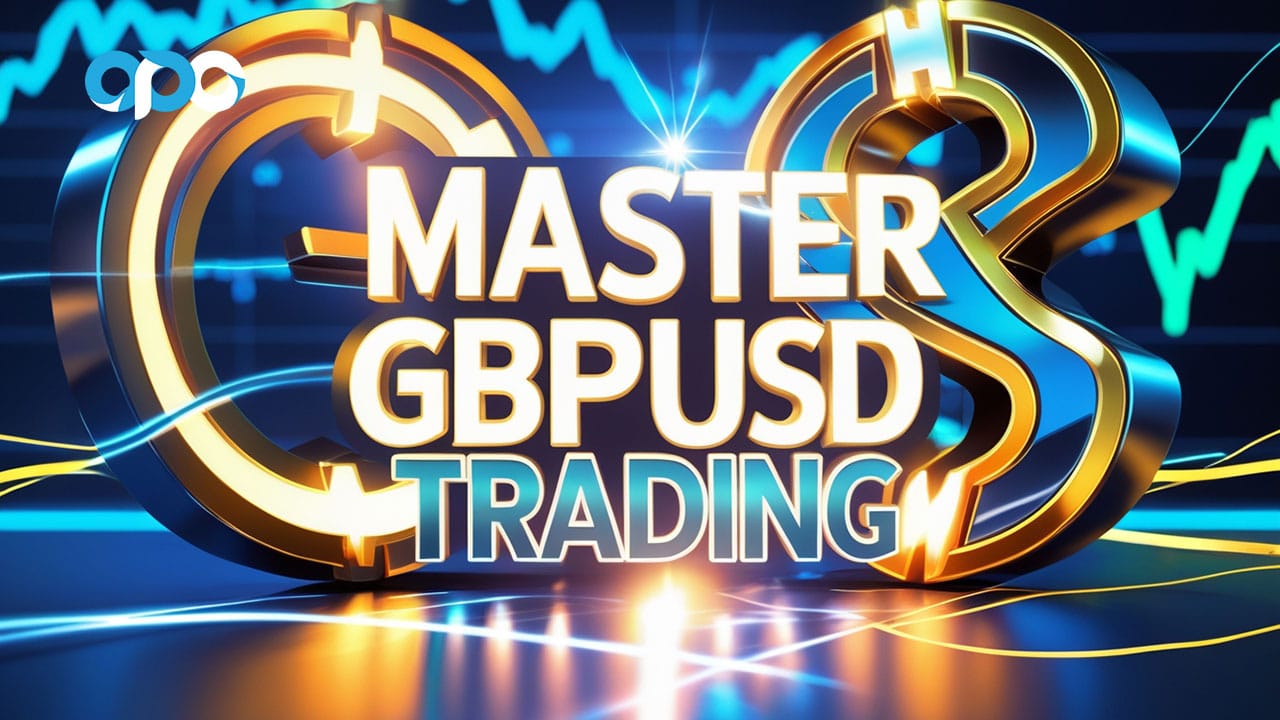
What is GBPUSD in Forex Trading?
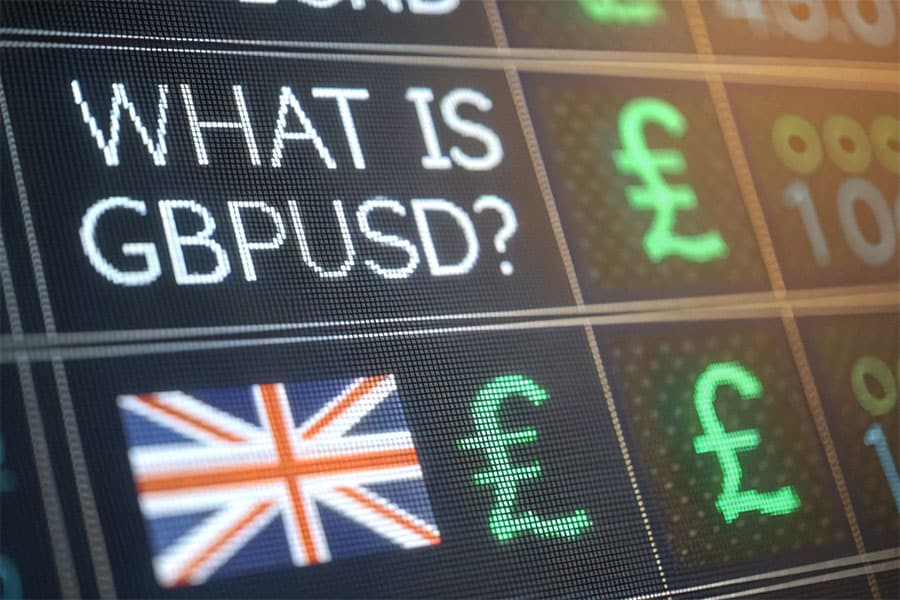
GBPUSD, commonly referred to as the GBP/USD currency pair, represents the exchange rate between the British Pound Sterling (GBP) and the US Dollar (USD). In forex trading, this pair indicates how many US Dollars are required to purchase one British Pound. As one of the most actively traded pairs in the forex market, GBPUSD offers high liquidity and volatility, making it a favorite among traders seeking to capitalize on market movements.
Understanding the meaning of GBPUSD in forex is crucial for traders aiming to navigate the forex market effectively. This pair not only reflects the economic health of the UK and the US but also serves as a barometer for broader global financial trends.
Why is GBPUSD One of the Most Popular Currency Pairs?
GBPUSD’s popularity is driven by several key factors:
High Liquidity: The GBPUSD pair boasts one of the highest trading volumes in the forex market. This liquidity ensures tighter spreads, reducing trading costs and allowing for smoother entry and exit points.
Economic Significance: Both the UK and the US are major global economies. Economic data and policy decisions from these countries significantly impact the GBPUSD pair, making it a focal point for traders looking to leverage economic shifts.
Volatility: Known for its price volatility, GBPUSD offers ample trading opportunities. While volatility can increase risk, it also provides the potential for higher profits through significant price swings.
Correlation with Other Markets: The GBPUSD pair often moves in tandem with other financial markets, including commodities like oil and gold. This correlation allows traders to diversify their strategies and hedge against market fluctuations.
During major economic announcements such as interest rate decisions or GDP reports, GBPUSD can experience substantial volatility, providing lucrative trading opportunities.
Understanding GBPUSD Basics
Grasping the fundamentals of GBPUSD is essential for developing effective trading strategies. Let’s break down the core elements that define this currency pair.
What Does GBPUSD Represent?
GBPUSD denotes the value of the British Pound against the US Dollar. For example, if GBPUSD is quoted at 1.3000, it means that 1 British Pound equals 1.30 US Dollars. This pair is pivotal for traders seeking exposure to both the UK and US economies, making it a cornerstone of global forex trading.
The GBPUSD pair is more than just a reflection of two currencies; it’s an indicator of the economic health and political stability of the UK and the US. By analyzing GBPUSD, traders gain insights into broader economic trends and investor sentiment, which can influence other markets and trading opportunities.
Factors Influencing GBPUSD Price Movements
Several elements drive the fluctuations in GBPUSD, making it a dynamic and sometimes unpredictable pair. Understanding these factors is key to making informed trading decisions.
Economic Indicators: Data such as GDP growth, employment rates, and inflation from both the UK and the US play a significant role in GBPUSD movements. Positive economic indicators typically strengthen a currency, while negative data can weaken it.
Political Stability: Events like Brexit have historically caused significant volatility in the GBPUSD pair. Political uncertainty or stability directly impacts trader confidence and currency strength.
Interest Rates: Central bank policies from the Bank of England (BoE) and the Federal Reserve (Fed) are crucial. Decisions on interest rates can either attract foreign investment or discourage it, thereby strengthening or weakening the respective currencies.
Market Sentiment: Traders’ perceptions and speculative activities influence GBPUSD prices. Market sentiment can be swayed by news events, economic forecasts, and global developments.
For example, a hike in interest rates by the Federal Reserve can strengthen the USD, leading to a decline in GBPUSD as traders adjust their positions.
The Role of the US Dollar and British Pound in Global Markets
The US Dollar is the world’s primary reserve currency, heavily influencing global trade and investment. Its status as the dominant currency in international markets makes USD movements particularly impactful on currency pairs like GBPUSD.
On the other hand, the British Pound, one of the oldest currencies still in use, holds significant weight in international finance. The UK’s robust financial sector and its role in global trade make GBP movements equally influential.
Together, they reflect the economic health and geopolitical stability of two major global powers, making GBPUSD a barometer for broader market trends. During periods of global uncertainty, the USD often acts as a safe-haven currency, impacting the GBPUSD pair’s dynamics as traders seek stability.
Read More: The GBPUSD Illusion of Easy Money
Factors Influencing GBP/USD
Delving deeper into what drives the GBPUSD pair, let’s explore the economic indicators and the role of central banks in its valuation.
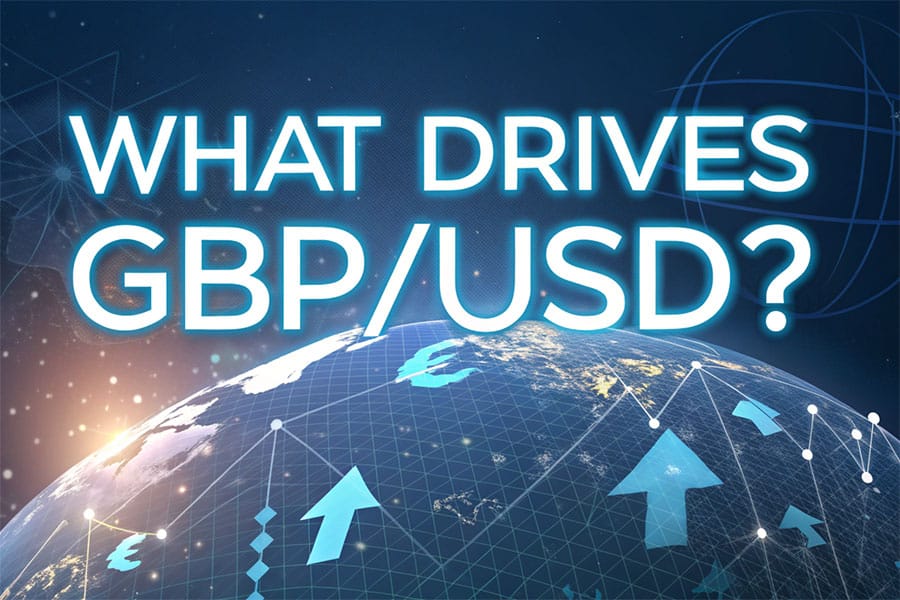
Economic Indicators Affecting GBPUSD
Economic indicators provide a snapshot of the economic health of a country. For GBPUSD, both UK and US indicators are pivotal:
Gross Domestic Product (GDP): GDP measures the economic output of a country. A higher GDP growth rate indicates a healthy economy, potentially strengthening the GBP or USD depending on which country’s GDP is improving.
Unemployment Rates: High unemployment can signal economic troubles, weakening the currency. Conversely, low unemployment rates can bolster the currency as they indicate a strong economy.
Inflation Rates: Central banks may adjust interest rates in response to inflation data. Higher inflation can lead to higher interest rates, attracting foreign investment and strengthening the currency.
Retail Sales and Consumer Confidence: These indicators reflect the spending behavior and economic outlook. Strong retail sales and high consumer confidence typically support currency strength.
For instance, a higher-than-expected UK GDP growth rate can boost the GBP, leading to an appreciation in GBPUSD.
Role of Central Banks in GBP/USD Valuation
Central banks wield significant influence over their respective currencies through monetary policies. The Bank of England (BoE) and the Federal Reserve (Fed) are the primary authorities affecting GBPUSD.
Interest rate decisions, quantitative easing, and other policy measures directly influence currency values. For instance, higher interest rates typically attract foreign investment, strengthening the currency as investors seek higher yields.
During the COVID-19 pandemic, the Fed’s aggressive monetary policies significantly influenced USD’s strength, affecting the GBPUSD pair.
How to Trade GBPUSD
Trading GBPUSD requires a strategic approach, combining education, reliable brokerage, and effective trading plans. Let’s outline the key steps and explore popular strategies to help you navigate this currency pair successfully.
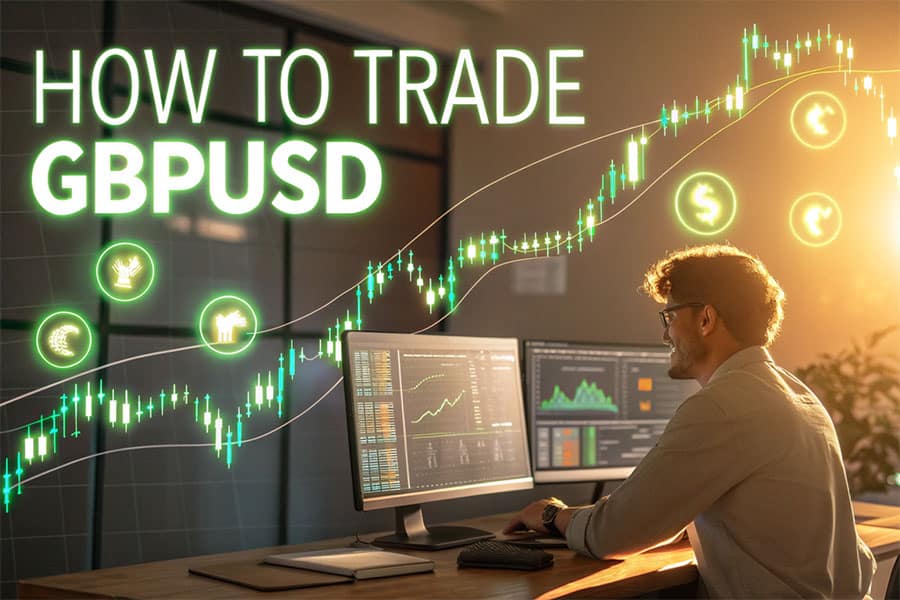
Key Steps to Start Trading GBPUSD
Embarking on your GBPUSD trading journey involves several crucial steps:
Educate Yourself: Start with understanding forex basics and the specifics of GBPUSD. Knowledge is your most powerful tool in forex trading.
Choose a Reliable Broker: Opt for a regulated forex broker like Opofinance to ensure security and support. A trustworthy broker provides the necessary tools and resources for effective trading.
Develop a Trading Plan: Define your goals, risk tolerance, and strategies. A well-structured trading plan helps maintain discipline and focus.
Analyze the Market: Utilize both technical and fundamental analysis to make informed trading decisions. Understanding market trends and economic indicators is key.
Execute Trades: Start with small positions to manage risk effectively. As you gain experience, you can adjust your trading size accordingly.
Monitor and Adjust: Continuously review your trades and strategies. Adaptability is crucial in the ever-changing forex market.
Starting with a solid foundation ensures that you approach GBPUSD trading with confidence and clarity.
Popular GBPUSD Trading Strategies
GBPUSD’s volatility and liquidity make it ideal for various trading strategies. Here, we explore two popular strategies in detail: the Asian Session Breakout Strategy and the Range Trading Strategy.
Asian Session Breakout Strategy
This strategy capitalizes on the low volatility during the Asian trading session, followed by significant movements as the London session begins. Traders identify key support and resistance levels and place breakout orders to capture the ensuing price action.
How It Works:
Identify Consolidation Zones: During the Asian session (12 AM to 9 AM GMT), GBPUSD often trades within a tight range due to lower trading volume.
Set Breakout Points: Determine key support and resistance levels based on previous price action.
Place Pending Orders: Set buy orders above resistance and sell orders below support.
Manage Trades: Once a breakout occurs, enter the trade and set stop-loss orders to manage risk.
For example, if GBPUSD consolidates between 1.3000 and 1.3100 during the Asian session, a breakout above 1.3100 as London opens can signal a strong upward movement.
Range Trading Strategy
GBPUSD often trades within specific price ranges. Traders using this strategy buy at support levels and sell at resistance levels, profiting from the predictable oscillations. Effective in stable market conditions, range trading minimizes exposure to major market shifts.
How It Works:
Identify the Trading Range: Use historical price data to determine the upper (resistance) and lower (support) boundaries.
Enter Trades at Extremes: Buy near support and sell near resistance.
Set Stop-Loss Orders: Place stop-loss orders slightly outside the identified range to protect against breakouts.
Take Profit at Opposite Boundaries: Close trades as the price approaches the opposite boundary.
During periods of economic stability, GBPUSD may oscillate between 1.3000 and 1.3200, providing clear entry and exit points for range traders.
Read More: Unlock the Secrets of GBP/USD Scalping
Historical Performance of GBP/USD
Analyzing the historical performance of GBPUSD provides valuable insights into its behavior during various economic and political events. Understanding past movements can help traders anticipate future trends and make informed decisions.
Major Historical Movements in GBP/USD
GBPUSD has experienced significant fluctuations over the years, each influenced by unique economic and political circumstances:
Brexit Referendum (2016): The UK’s decision to leave the European Union caused a sharp decline in GBPUSD due to uncertainty and market instability.
Global Financial Crisis (2008): Both currencies were impacted, but the USD saw a stronger response as it is considered a safe-haven currency.
COVID-19 Pandemic (2020): Resulted in increased volatility due to economic disruptions and differing monetary responses from the BoE and Fed.
These historical events highlight GBPUSD’s sensitivity to global economic and political changes, offering valuable lessons for traders.
Impact of Significant Events on GBP/USD
Events such as elections, trade negotiations, and geopolitical tensions can trigger rapid price movements in GBPUSD. Understanding how these events impact the currency pair is crucial for effective trading.
For example, Brexit introduced prolonged uncertainty, leading to persistent volatility and presenting both challenges and opportunities for traders. Similarly, major economic announcements or unexpected geopolitical developments can cause swift and significant price movements.
COVID-19 Pandemic
The COVID-19 pandemic serves as a prime example of how a global event can impact GBPUSD. As countries grappled with the health crisis, economic policies varied significantly between the UK and the US. The Fed’s aggressive interest rate cuts and quantitative easing measures strengthened the USD, while the BoE’s more conservative approach led to a weaker GBP. Traders who monitored these policy responses and adjusted their positions accordingly were able to navigate the volatility effectively.
Best Times to Trade GBPUSD
Timing is crucial in forex trading, especially for a volatile pair like GBPUSD. Understanding the optimal trading hours and market volatility can enhance trading strategies and profitability.
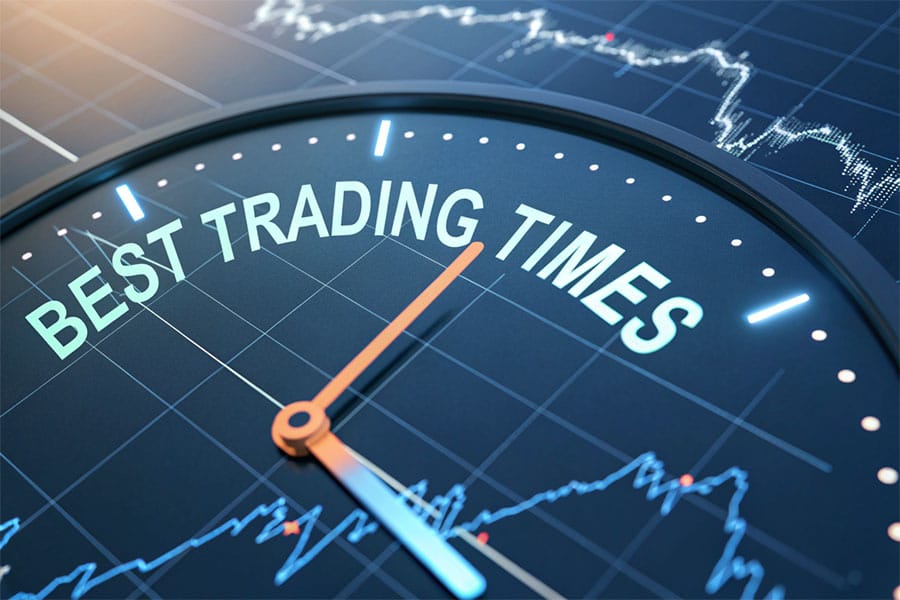
Optimal GBPUSD Trading Hours (London and New York Overlap)
The best time to trade GBPUSD is during the overlap of the London and New York sessions, typically between 8 AM and 12 PM EST. This period offers the highest liquidity and volatility, enhancing trading opportunities with tighter spreads and more pronounced price movements.
Traders often see increased trading volume and price swings during this overlap, making it an ideal time for executing strategies like breakout trading.
Market Volatility During Different Time Zones
GBPUSD experiences varying levels of volatility across different time zones, which can influence trading strategies:
Asian Session: Lower volatility, suitable for range trading. This session is less active, leading to fewer significant price movements.
European Session: Increased activity with economic data releases. The release of UK economic indicators can lead to heightened volatility.
North American Session: High volatility during the overlap with the European session. This period is characterized by significant price movements due to simultaneous trading in both London and New York.
Understanding these patterns helps traders optimize their trading strategies based on market conditions.
For example, avoiding low-volatility periods can help traders prevent getting caught in false breakouts.
Risks and Challenges in Trading GBPUSD
While GBPUSD offers numerous trading opportunities, it also presents specific risks and challenges. Proper risk management and strategy adaptation are essential for mitigating these dangers.
Common Mistakes Traders Make with GBPUSD
Many traders fall into common pitfalls when trading GBPUSD. Recognizing these mistakes can help you avoid them and improve your trading performance:
Overleveraging: Using excessive leverage can amplify losses. While leverage can increase potential profits, it also heightens the risk of significant losses.
Ignoring Fundamental Analysis: Relying solely on technical indicators without considering economic indicators can lead to uninformed trading decisions. Fundamental analysis provides insights into the broader economic context.
Emotional Trading: Letting emotions drive trading decisions instead of following a disciplined strategy can result in impulsive and often detrimental trades.
Overleveraging during volatile periods like Brexit can lead to significant losses, highlighting the importance of prudent risk management.
Managing Risk Effectively
Implementing robust risk management techniques is crucial for sustained success in forex trading. Here are some strategies to manage risk effectively:
Use Stop-Loss Orders: Protect against significant losses by setting stop-loss orders at strategic levels. This ensures that your losses are limited if the market moves against your position.
Diversify Your Portfolio: Spread risk across different currency pairs and other financial instruments. Diversification reduces the impact of adverse movements in any single asset.
Maintain a Trading Journal: Track and analyze your trades to identify areas for improvement. A trading journal helps you understand what strategies work and where adjustments are needed.
Effective risk management ensures long-term sustainability in the volatile forex market.
Read More: What Are Major Currency Pairs?
GBPUSD vs. Other Major Pairs
Comparing GBPUSD to other major currency pairs helps traders understand its unique characteristics and how it fits into a broader trading strategy.
How GBPUSD Compares to EURUSD and USDJPY
When stacked against other major pairs like EURUSD and USDJPY, GBPUSD offers distinct advantages:
Higher Volatility: GBPUSD tends to have greater price swings, presenting more trading opportunities. While this volatility can lead to higher profits, it also increases the risk.
Strong Correlation with UK and US Economies: GBPUSD is directly tied to two of the world’s largest economies, making it highly responsive to economic and political changes in these regions.
Distinct Trading Patterns: GBPUSD exhibits unique responses to economic and political events, offering different trading signals compared to EURUSD and USDJPY.
While EURUSD is often seen as more stable, GBPUSD’s higher volatility can be more attractive for traders seeking larger price movements.
Correlation Between GBPUSD and Commodity Prices
GBPUSD often correlates with commodity prices, especially oil and gold. Fluctuations in commodity prices can influence investor sentiment, impacting the strength of both GBP and USD.
For example, rising oil prices can strengthen the USD, leading to a decline in GBPUSD as investors flock to the dollar.
Tips for Successful GBPUSD Trading
Success in GBPUSD trading hinges on a combination of choosing the right broker, adhering to a disciplined trading plan, and continuously refining your strategies. This section provides actionable tips to enhance your trading performance.

Choosing the Right Broker for GBPUSD
Selecting a reputable broker is paramount. Here are key factors to consider:
Regulation and Security: Ensure the broker is regulated by authorities like ASIC. Regulation provides a layer of security and ensures the broker adheres to industry standards.
Competitive Spreads and Commissions: Lower trading costs enhance profitability. Compare spreads and commissions across different brokers to find the most cost-effective option.
Robust Trading Platforms: Access to advanced tools and features can significantly enhance your trading efficiency. Platforms like MetaTrader 5 (MT5) offer superior analytical tools and execution capabilities.
Excellent Customer Support: Reliable assistance when needed is crucial, especially during volatile market conditions.
Choosing a broker like Opofinance, which is regulated and offers a secure trading environment, can significantly impact your trading success.
Importance of a Trading Plan and Discipline
A well-defined trading plan outlines your strategies, risk management rules, and goals. Discipline in following your plan prevents emotional trading and helps maintain consistency, which is vital for long-term success.
Traders who adhere to their trading plans are more likely to achieve sustainable profits compared to those who trade impulsively.
Pro Tips for Advanced Traders
For those looking to take their GBPUSD trading to the next level, advanced strategies and tools can provide an edge. Here are some pro tips to enhance your trading performance:
Leverage Advanced Technical Indicators: Utilize tools like Fibonacci retracements and Ichimoku clouds for deeper market insights.
Incorporate Sentiment Analysis: Gauge market sentiment through news flow and trader positioning. Understanding the collective mindset of the market can provide valuable trading signals.
Optimize Trade Timing: Align your trades with high-impact news releases for maximum advantage. Timing your trades around significant economic events can enhance profitability.
Automate Strategies with Expert Advisors: Use automated trading systems to execute complex strategies efficiently. Automation can help eliminate emotional biases and improve trade execution speed.
Continuously Educate Yourself: Stay updated with the latest market trends and advanced trading techniques. Continuous learning ensures you remain competitive in the ever-evolving forex market.
These pro tips can give advanced traders the edge needed to outperform the market, enhancing their GBPUSD trading performance.
Opofinance: Your Trusted Partner in GBPUSD Trading
When it comes to trading GBPUSD, partnering with a reliable broker is crucial. Opofinance, an ASIC regulated forex broker, offers a suite of services tailored for both novice and experienced traders:
Social Trading Service: Connect with and learn from top traders in the community. This feature allows you to mirror successful traders’ strategies and gain insights from their expertise.
Featured on the MT5 Brokers List: Access the advanced MetaTrader 5 platform for superior trading capabilities. MT5 offers a range of analytical tools, automated trading options, and a user-friendly interface.
Safe and Convenient Deposit and Withdrawal Methods:
- Multiple Payment Options: Including bank transfers, credit/debit cards, and e-wallets, ensuring flexibility and convenience.
- Fast Processing Times: Ensuring your funds are available when you need them, minimizing downtime.
- Enhanced Security: Protecting your transactions with state-of-the-art encryption, providing peace of mind.

Choose Opofinance for a seamless and secure trading experience, and take your GBPUSD trading to the next level. Start Trading with Opofinance Today!
Conclusion
Mastering GBPUSD in forex trading is a strategic move for any trader aiming to thrive in the competitive forex market. By understanding the fundamentals, staying informed about economic indicators, and employing effective trading strategies, you can navigate the complexities of this popular currency pair with confidence. Remember to manage your risks diligently and choose a reputable broker like Opofinance to support your trading journey. With dedication and the right tools, GBPUSD can be a powerful addition to your trading portfolio, offering numerous opportunities for profit in a dynamic market.
Key Takeaways
GBPUSD is a highly liquid and widely traded currency pair, representing the exchange rate between the British Pound and the US Dollar.
Economic indicators and central bank policies are critical factors influencing GBPUSD movements. Staying updated on these can enhance your trading decisions.
Effective trading strategies, such as breakout and range trading, can enhance profitability by capitalizing on market volatility and trends.
Risk management and discipline are essential for sustained success in GBPUSD trading. Implementing stop-loss orders and maintaining a trading journal are key practices.
Partnering with a regulated broker like Opofinance ensures a secure and optimized trading environment, providing the necessary tools and support for effective trading.
How does Brexit affect GBPUSD trading?
Brexit has introduced significant uncertainty into the GBPUSD pair, leading to increased volatility and unpredictable price movements. Traders need to closely monitor Brexit-related news and economic data to navigate the associated risks effectively. The prolonged uncertainty surrounding the UK’s exit from the EU resulted in sharp declines and sustained volatility in GBPUSD, creating both challenges and opportunities for traders.
What technical indicators are most effective for trading GBPUSD?
Popular technical indicators for GBPUSD include Moving Averages, Relative Strength Index (RSI), and Fibonacci retracements. These tools help identify trends, overbought or oversold conditions, and potential reversal points, enhancing trading decisions. For instance, Moving Averages can smooth out price data to identify the direction of the trend, while RSI can signal potential reversal points when the currency pair is overbought or oversold.
Can GBPUSD be influenced by geopolitical events outside the UK and US?
Yes, geopolitical events in other regions can indirectly impact GBPUSD. For instance, instability in the European Union or significant changes in global trade policies can influence investor sentiment and currency movements, affecting the GBPUSD pair. Additionally, global events such as trade wars, natural disasters, or political upheavals can create ripple effects in the forex market, impacting major currency pairs like GBPUSD.







